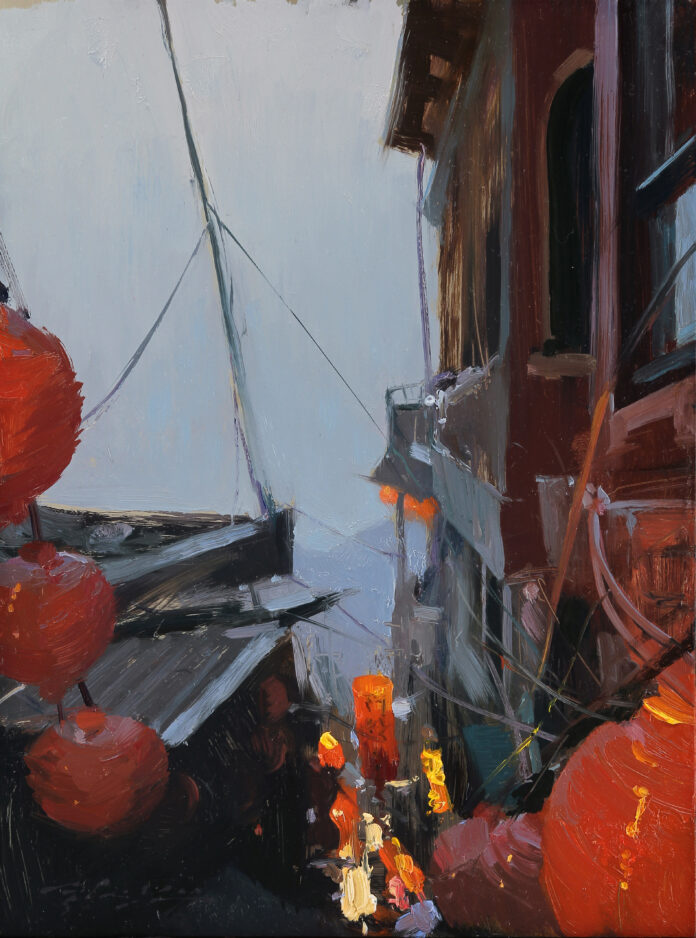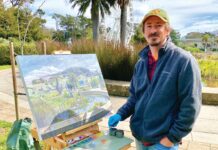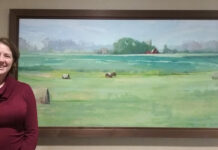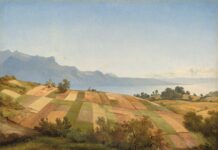Go “behind the easel” and learn Hsin-Yao Tseng’s plein air painting techniques, which are driven by his unending ambition to make better paintings.
by John A. Parks
Responding to the Location When Plein Air Painting
Given the large variety of Hsin-Yao Tseng’s subject matter, scouting for locations is obviously part of the artist’s pleasure. “I’ve always been fascinated by painting reflections, water, sunsets, twilight, and city lights,” he says. “I find these lighting situations have dramatic contrast and feeling, and will allow me to play with more subtle colors and temperature changes.” As well as the lighting, the artist also searches for something special in his subjects. “When I am out on location, I often try to find something that speaks to me,” he says.
“That ‘something’ could be an interesting and yet unique object, such as an old rustic house, a boat, or water reflections. I always have an intent before starting any piece. I scan my surroundings, looking for anything that interests me. I ask myself what I want to emphasize in my work that day. I am looking for great compositional design and aerial perspective, but I try not to spend too much time on scouting spots so that I can enjoy more time painting.”
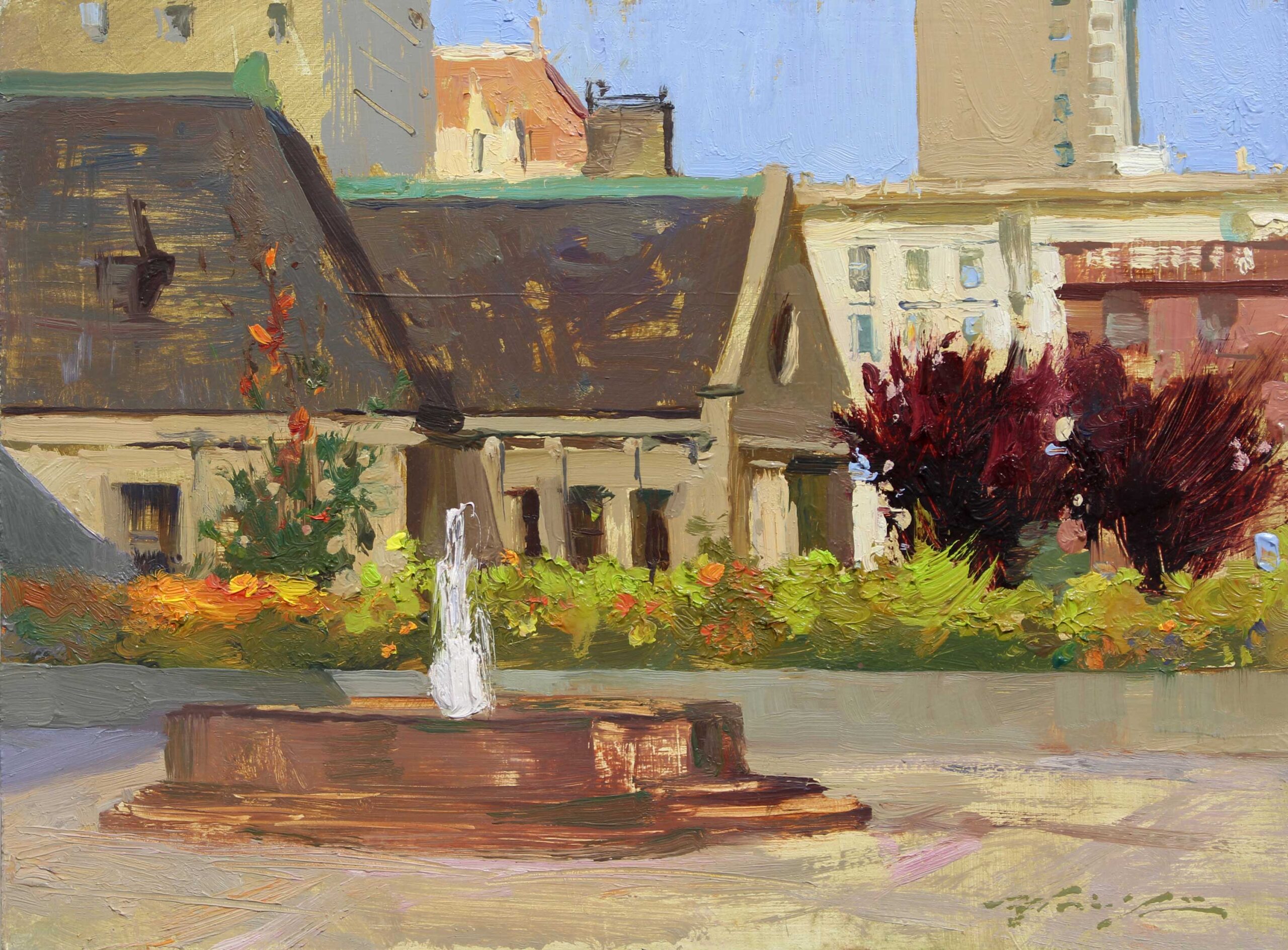
Once he has selected his plein air painting location, the artist begins by thinking about his composition. “I use both my hands as a viewfinder to analyze the placement of elements,” he says. “This helps with cropping to find my composition. Next, I start drawing and sketching roughly on the panel, concentrating on shapes and perspective, and not a lot of detail. It is beneficial to work on a mid-value, toned surface instead of a raw white surface.”
At this stage, the artist reminds himself that time is short, and that focus and speed are necessary. “I have to keep in mind that the light will continue to change every two hours, so I force myself to finish a plein air piece within that time,” he says. “I quickly block in some dark shapes in the shadows with transparent colors and thin washes, unifying all the shadows. Then, keeping the painting under control, I start working from background to foreground.” Tseng says he always strives to keep the background values lighter and less saturated than the foreground. “This will help to create an atmospheric quality, and allow colors and values to strengthen as they come forward,” he says.
As work gets underway, the artist concentrates on the larger masses and bigger areas of the painting. “I use larger brushes to block in and do big masses,” he says. As he does so, he varies the thickness of the paint based on whether the area of the painting he is working on is in shadow or light. “I use a thin-to-thick method,” he says. “Shadows are transparent and thinner; light areas are more opaque and thicker.”
Once he has established the major lights and shadows, Tseng concentrates on developing the full richness of the painting. “I keep building mid-tones or middle values outward to darker and lighter extremes,” he says. “I also focus on more muted or gray colors before emphasizing brighter or more intense colors.”
The artist works through the whole painting in passes, trying to build up the entire picture with a fairly even attack. ”As I proceed from one pass to another, I model the forms, working from big shapes to smaller shapes, playing with the variation of edges and variety of brushstrokes,” he says. ”At the next pass I revisit each area, observing possible corrections, more subtle value differences, and color temperature changes.”
One of the unusual features of Tseng’s technique is his use of many brushes in the same painting, sometimes as many as 12. “I have different brushes for the darks and lights,” he says, “and then often I will have different brushes for each element – one for the trees, one for the hills, one for something in the foreground. Having all these brushes also means that I don’t have to spend time cleaning brushes between colors.”
With so much paint and so many brushes in play, the artist admits that he can be a messy painter. He wears rubber gloves while he works to help keep the paint from his hands. Tseng generally paints on a prepared wooden panel attached to the lid of a pochade box. The palette is set in the box directly below the painting, and the artist mixes swiftly with the brush, dragging areas of paint together on the palette to explore the subtlety of tone and color on the fly.
As he approaches the end of his painting, Tseng concentrates on his focal point. “Any detailed refinements should be done at the end of the painting,” he says. “These should be smaller, darker, or lighter accent strokes. Maybe an area requires softer edges or needs to be simplified with a larger brush.” Before completion, the artist takes a close look at everything he has done. “I double-check to make sure there is enough contrast,” he says. “The final stages require sensitivity in application and aesthetic decision-making.”
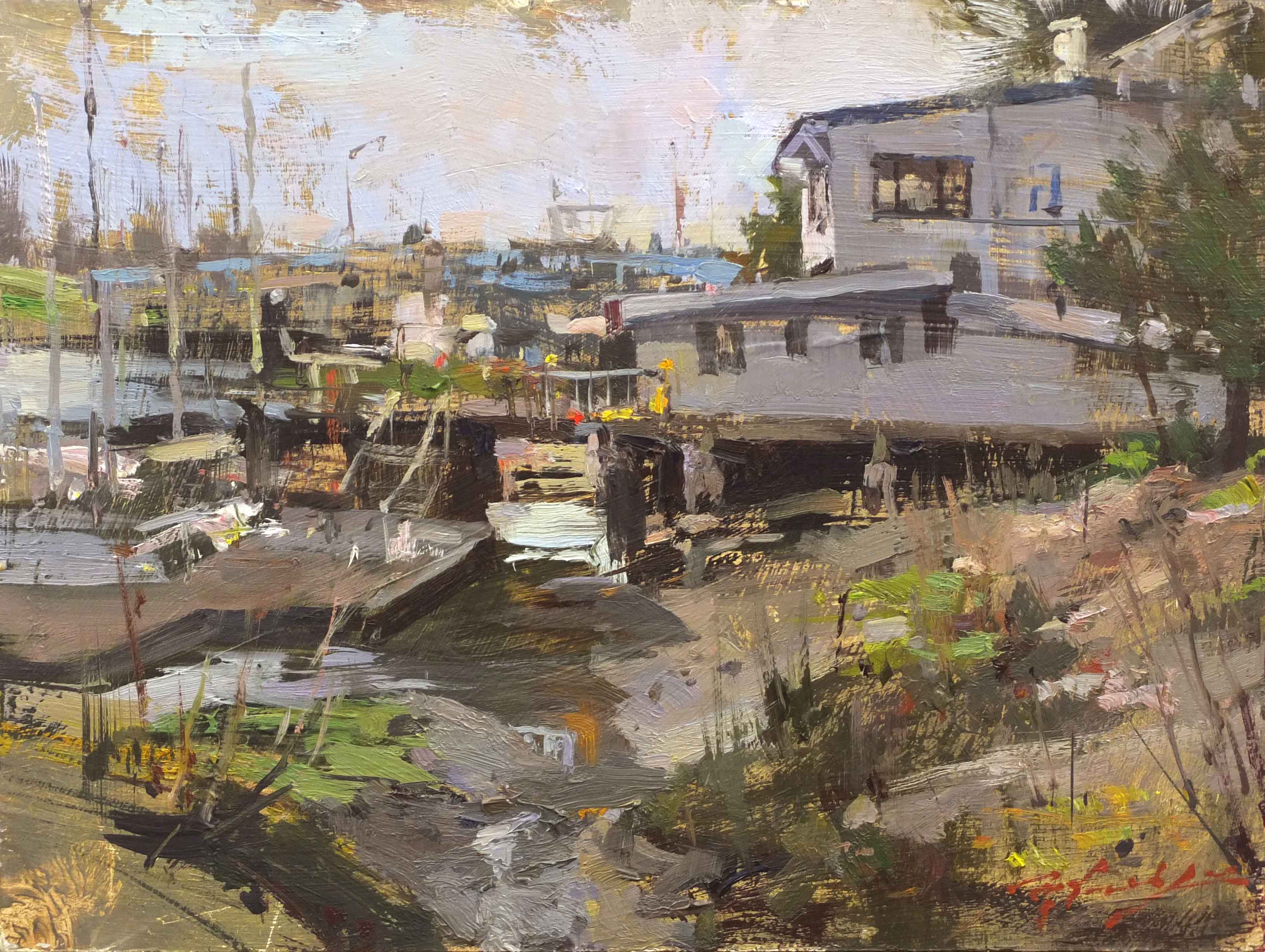
Saying More with Less
Like all plein air painters, Tseng faces the challenges of selection and simplification. The secret, he says, is to begin broadly and to leave the painting open as it develops. “I do not try to finish off each area or put in too many details as I am laying it in,” he says. “I work for the overall design and value pattern, and also lose every edge that I can. I try to forget what the object is in front of me. Instead of a tree, a house, or a field, I just think, ‘Here is a little square of green, here maybe a bit of yellow,’ and I paint it just as it looks to me – the exact color and shape – until I’ve created my own impression of the scene before me.”
With his speedy approach and decisive brushwork, Tseng makes paintings that exude a sense of freshness and astonishing immediacy, while at the same time holding on to considerable subtlety of color. In “Alameda Terminal,” for instance, the artist paints among the industrial docks. A small area of water slopping against the side of the shore occupies the foreground, while various piers and ships are indicated just behind it.
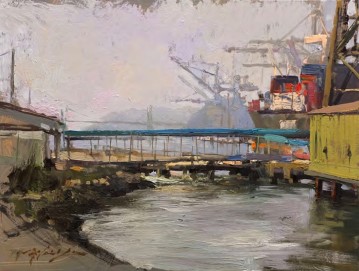
Far beyond, almost lost in the haze, we glimpse the Golden Gate Bridge as well as some cranes and derricks. The hills in the far distance are little more than a suggestion in indigo and violet. The painting displays a wide range of thicknesses, from the bare, beige ground to heavy impasto in the lights in the foreground. Brushwork ranges from broad strokes in the water to skittering dashes in the details of the pier and shipping. An airy vibrancy suffuses the work, but it doesn’t seem slight; the wealth of paint and subtlety of color give us a rich and substantial sense of the subject.
A similar compositional idea is pursued in “Towards the Ocean Beach,” where once again the foreground is occupied by a large open space. This time the space is a stretch of street in one of San Francisco’s famously hilly neighborhoods. Flanked by cars and low-rise apartment blocks, it stretches down to the beachfront and the misty sea beyond. The painting is a masterpiece of simplification, with cars reduced to a few swift brushstrokes and whole buildings conjured with a few dabs and touches. The sea is miraculously achieved with gray violets sitting on top of aqua turquoises, while a few touches of thick white paint create the rolling surf of the Pacific Ocean.
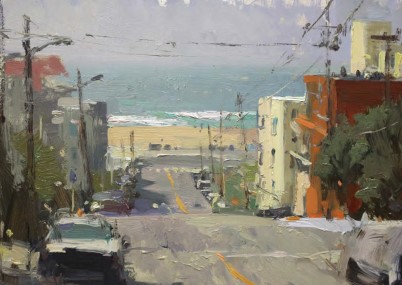
Like all artists who paint en plein air, Tseng is obliged to grapple with the challenges of weather and circumstances that aren’t always conducive to working outdoors. But he says the greater challenge arises from his unending ambition to make better paintings. “After one has played a vast quantity of notes, it is simplicity that emerges as the crowning reward of art. My ongoing challenge is learning how to say more while still being able to simplify. Less is more, as they say. I think doing quick plein air paintings is a good practice to help me achieve these artistic goals.”
Connect with Hsin-Yao Tseng:
Website | Instagram
Save years of struggle and frustration by discovering techniques in just three days at Plein Air Live, the world’s largest online art training event March 8-11, 2023.
And browse more free articles on plein air painting here at OutdoorPainter.com

